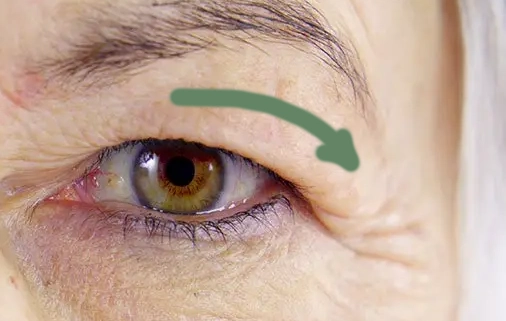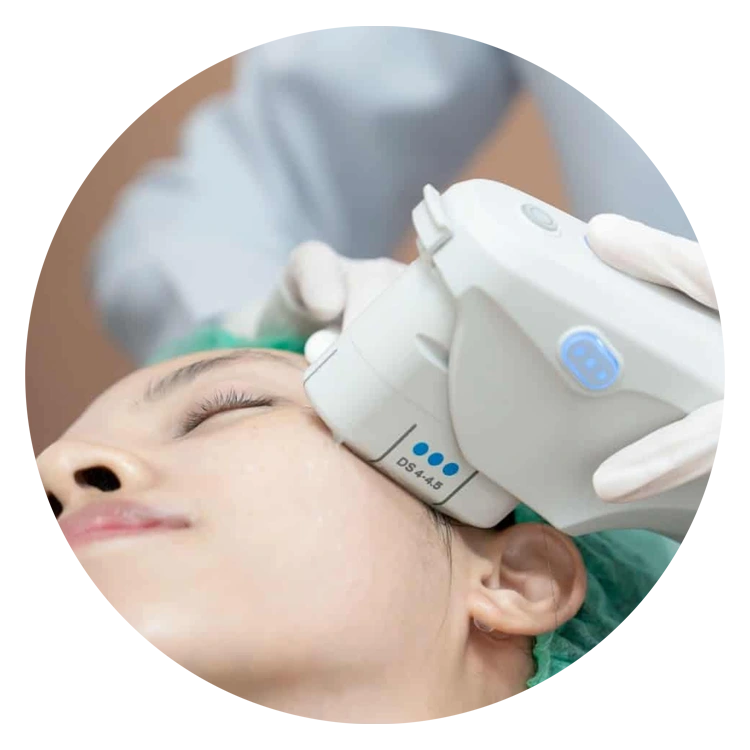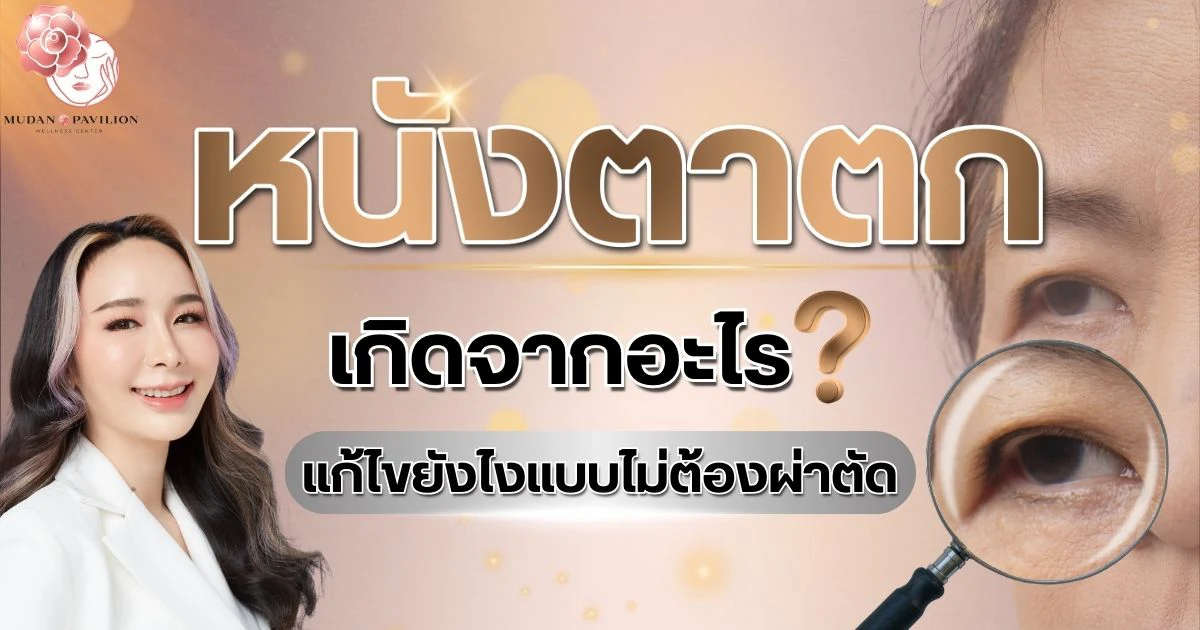Droopy eyelidsIt's a problem many people face, especially as they get older or use their eyes a lot, weakening the skin around their eyes. This results in tired, dull eyes and potentially making the face look older than its age. Many people think surgery is the only solution, but there are actually many ways to address droopy eyelids without surgery, including skin care creams, laser treatments, and various lifting techniques. This article will introduce you to the causes of droopy eyelids and easy, safe solutions, perfect for those who want to improve their appearance without pain.

What are the symptoms of ptosis?
Ptosis is a condition in which the upper eyelid droops lower than normal. It may affect one or both eyes, causing the eyelid to partially or completely obstruct vision and interfere with vision. Ptosis can occur from birth or later in life, such as with aging or as a result of various diseases.

Ptosis occurs when the upper eyelid droops more than normal, blocking the pupil. This drooping eyelid can obstruct vision, resulting in blurred or narrowed vision, especially when looking upward. Ptosis can also cause eye strain due to the need to strain the eyes or use more muscles around the eyes and forehead to see. Additionally, the eyes may appear uneven, with one eye appearing larger than the other. Some people may also experience neck pain and headaches due to the need to tilt their head back to improve vision.
What causes drooping eyelids?
As you know, ptosis is a condition in which the upper eyelid droops, blocking the view and potentially interfering with vision. It can be caused by a number of factors, including:
- heredity It is another major cause of ptosis, as it is passed down genetically from one generation to the next.
- Aging As we age, collagen and elastin production under the skin decreases, causing the skin to lose its elasticity. This causes the skin around the eyes to sag, making the eyelids and outer corners of the eyes droop more easily. Furthermore, if the muscles responsible for lifting the eyelids weaken, the eyelids can also droop.
- Degeneration of muscles and tendons As we age, the muscles around the eyes, such as the Orbicularis Oculi muscle or the Lateral Canthal Tendon, which help lift and maintain tension in the eyelid and outer corner of the eye, deteriorate. This causes the eyelid to sag and droop more easily.
- Loss of tissue, fat, or bone in the orbit As we age, the tissues, fat, and orbital bones that support and support the structures around the eyes atrophy or disappear. This causes the skin, tissues, and muscles that support them to lose their density or collapse, causing the eyelids to sag and droop, making the eyes appear sunken.
- sunlight As you know, sunlight contains UV rays that damage collagen and elastin under the skin, causing the skin around the eyelids to sag and develop more wrinkles, leading to ptosis.
- Smoking Nicotine in cigarettes affects the circulatory system and is responsible for destroying collagen and elastin under the skin, causing the skin around the eyelids to sag and droop, as well as causing the skin to deteriorate more quickly.
- Insufficient rest As we know, when we rest, our bodies repair worn-out parts. If our bodies don't rest, it will not only affect the recovery of skin cells, but also cause dark circles and sagging skin around the eyes.
- Frequent and severe eye rubbing It will cause the skin around the eyelids to become irritated and inflamed, causing the skin to lose its elasticity and cause the eyelids to droop.
- Improper contact lens wearing This will cause the skin around the eyelids to be pulled and the skin to sag, resulting in the eyelids or the outer corners of the eyes drooping.
- Choosing the wrong cosmetics and cleaning them harshly It will irritate the skin around the eyelids and may cause drooping of the eyelids.
- Staring at the screen for long periods of time This will cause the muscles around the eyes to become tired and lead to ptosis.
- Stress: And hormonal changes will affect the formation of wrinkles and sagging of the skin around the eyes, causing the eyelids to droop.
- Some diseases For example, muscle weakness, neurological diseases, cerebrovascular disease, and brain tumors can affect the functioning of the muscles around the eyes, causing the eyelids to droop.
- Accidents around the eyes A severe injury that affects the muscles and nerves that control the eyelid.
- Complications caused by surgery For example, eye surgery that may affect the muscles used to open the eyes.
What are the effects of ptosis?
As you know, ptosis is a condition in which the upper eyelid droops lower than normal. It can occur on both sides or just one eye. Ptosis can have many effects, such as causing a person to lose self-confidence in terms of appearance, making the face appear disproportionate, the eyes appear uneven, making the face look tired and prematurely aged. It also narrows the field of vision, which affects daily activities such as reading, driving, or working that requires the eyes. It can also cause blurred vision, blurred vision, and eye strain, as well as astigmatism, strabismus, and lazy eye. Finally, ptosis may also have other symptoms, such as double vision, facial muscle weakness, severe headaches, or weakness in the limbs. It can also be a sign of a serious disease related to the nervous system, such as cerebrovascular disease or muscular dystrophy.
How to fix droopy eyelids with filler injections

Droopy eyelid correction with filler injections involves injecting a hyaluronic acid (HA) filler directly into the upper eyelid. The filler fills the space created by collapsed fat and tissue, creating a fuller eye socket. It also supports and lifts sagging skin around the eyelids, improving the appearance of droopy eyelids and creating a more defined eyelid crease. It also stimulates collagen production beneath the skin, resulting in firmer, smoother skin around the eyes.
How to fix droopy eyelids with Botox injections

Correcting drooping eyelids with Botox injections involves injecting Botulinum Toxin Type A directly into the eyelid area. Botox inhibits the function of the muscles that pull the eyelid down and the eyebrows. Therefore, when the muscles relax, the muscles responsible for lifting the eyelids or eyebrows work more efficiently, causing the eyebrows to lift slightly and the drooping eyelids to lift as well.
How to fix droopy eyelids with thread lifts

Correcting droopy eyelids with thread lifts is a treatment using the Foxy Eyes Thread Lift technique, which uses threads to create a mesh structure. Thread them into the drooping outer corner of the eye and lift them above the outer corner of the eye. The thread barbs will entangle with the skin, lifting it up. This results in correcting the problem of droopy eyelids and droopy outer corners of the eye, making the eyes appear sharper and more attractive, as well as making the face appear more charming.
How to fix droopy eyelids with Ulthera

Ulthera is a treatment that uses focused ultrasound technology to stimulate collagen production and cause collagen fibers to contract, resulting in a lift and tightening of the eyelids and outer corners of the eyes, making the eyes appear brighter and larger.
How to correct droopy eyelids with double eyelid surgery
Double eyelid surgery is a treatment in which a doctor performs double eyelid surgery along with fat removal and excess skin around the eyes. This permanently corrects the problem of sagging skin and drooping eyelids, making the eyelid crease more visible and creating a more natural-looking result.
How to fix droopy eyelids naturally
- Eye muscle exercises For example, the wide-eyed pose, by opening your eyes as wide as possible, hold for about 5-10 seconds, then close your eyes completely, repeat 5-10 times, or the eyebrow-raising pose, by placing both index fingers under your eyebrows and pushing your fingers up to hit your brow bone, then slowly closing your eyes slowly, you will feel resistance from your fingers, hold for 3-5 seconds, then repeat 5 times, which will help stimulate blood circulation and help strengthen the muscles used to open your eyes, as well as help tighten your eyelids.
- Gentle massage and acupressure around the eyes By massaging 2-3 times a day for 5 minutes each time, this will help stimulate blood and lymph circulation, reducing swelling and relaxing the skin around the eyes.
- Alternating hot and cold compresses Use a towel soaked in hot water and place it over your eyes for about 30 seconds, followed by a towel soaked in cold water for about 30 seconds. Repeat this 3 times, 1-2 times a day. This will help stimulate blood circulation around the eyes and help relax the eye muscles.
- Eating healthy foods For example, foods that are high in antioxidants and foods that contain omega 3, which will help nourish the eyes and help slow down the deterioration of the skin or muscles.
Can a broken film heal on its own?
Drooping eyelids are usually caused by aging or by abnormalities in the muscles or nerves that control eyelid lifting. They do not resolve on their own and require medical treatment.






